Artist based in Philadelphia, PA
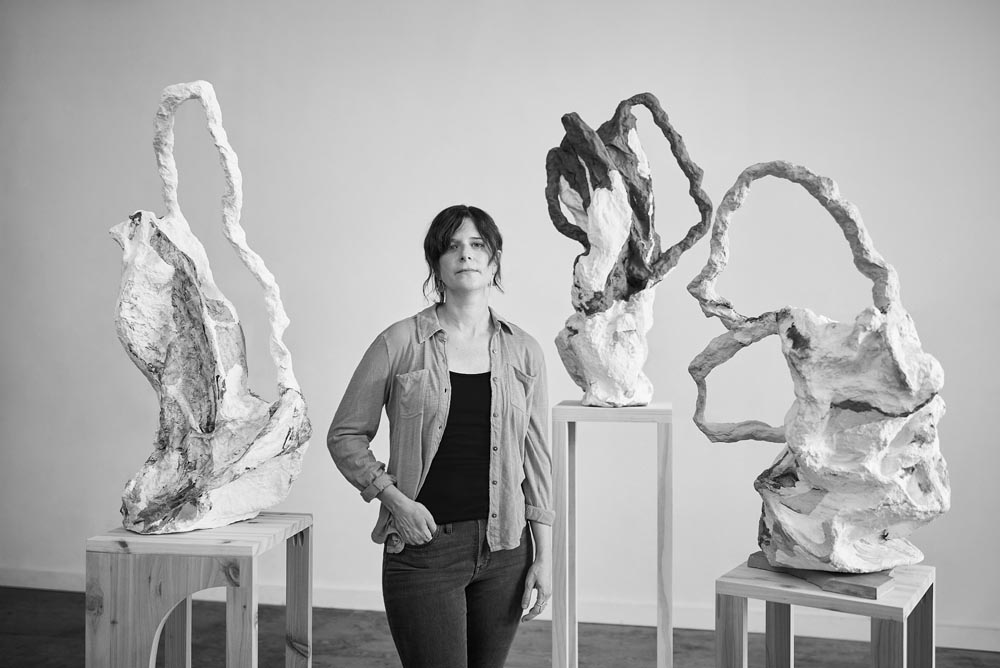
Alexis Granwell, Portrait of the artist. Image Credit: Tim Tiebout
Tell us about yourself, what's your background?
I think I always knew that I wanted to be an artist. My grandmother was an artist and for a period of time, she designed clothing. Eventually, she had to give up her business, but she painted until the end of her life and she crocheted weird and amazingly detailed dolls. She was always working with her hands, and both her and my mom encouraged me to experiment with drawing and clay from an early age. I would often build small models or dioramas as a child, creating little worlds. The discovery of making worlds has never left me.
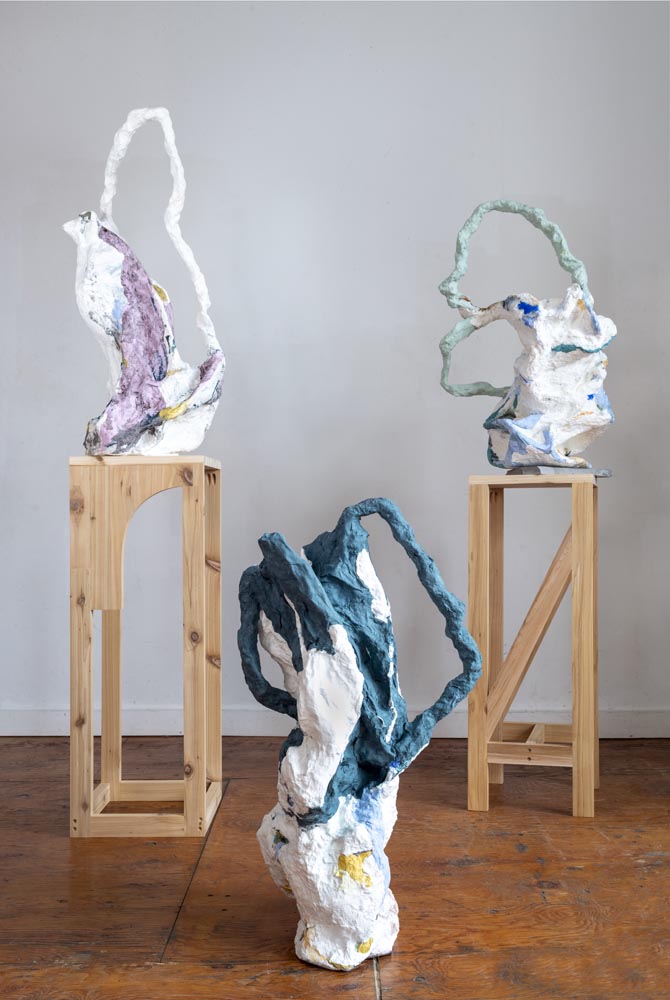
(left, rear) Gently Outwards, Papier-mâché, handmade paper with linen pulp paint, and wood, 70 inches x 40 inches x 15 inches, 2021. (right, rear) Looking On Papier-mâché, handmade paper with linen pulp paint, denim, plaster, and wood 66 inches x 18 inches x 16 inches 2021. (foreground)Full Bloom Papier-mâché, handmade paper with linen pulp paint, and wood 32 inches x 16 inches x 14 inches 2021 Image Credit: Constance Mensh
In high school, I began painting and drawing obsessively, landscapes in particular. Early influences included The Bay Area Painters, Cy Twombly, Joan Mitchell, and Sam Gilliam. I loved energetic paintings that could read as both spaces and surfaces.

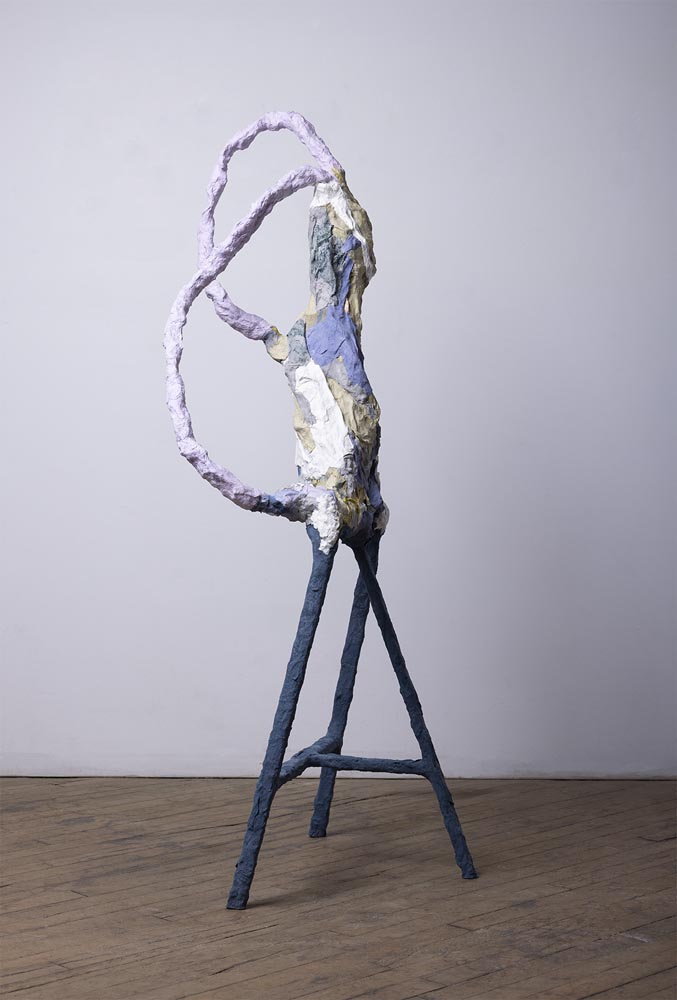
(left) Gently Outwards,detail Papier-mâché, handmade paper with linen pulp paint, and wood 70 inches x 40 inches x 15 inches 2021 Image Credit: Constance Mensh (right) We Bend With Massive Waves Papier-mâché, handmade paper with linen pulp paint, and steel 60 inches x 20 inches x 20 inches 2022 Image Credit: Ryan Collerd
I studied painting at Boston University’s College of Fine Arts BFA program and became increasingly interested in the relationship between observation and abstraction. Shortly after starting the MFA program at the University of Pennsylvania as a painter, I expanded my practice with interdisciplinary approaches, exploring printmaking and sculpture. These new processes connected me to the language of material, ultimately leading me to embrace the use of paper, with a focus on the seductive surface texture of pulp.
"I want my sculptures to heighten the experience of encounter, emphasize the body in space, and suggest connection to the larger world."
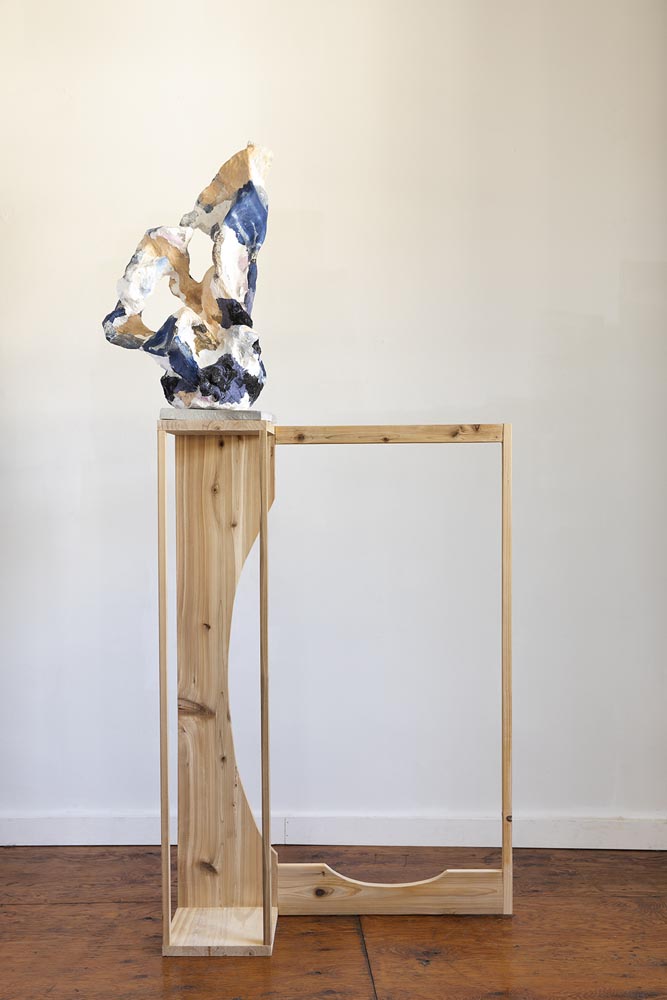
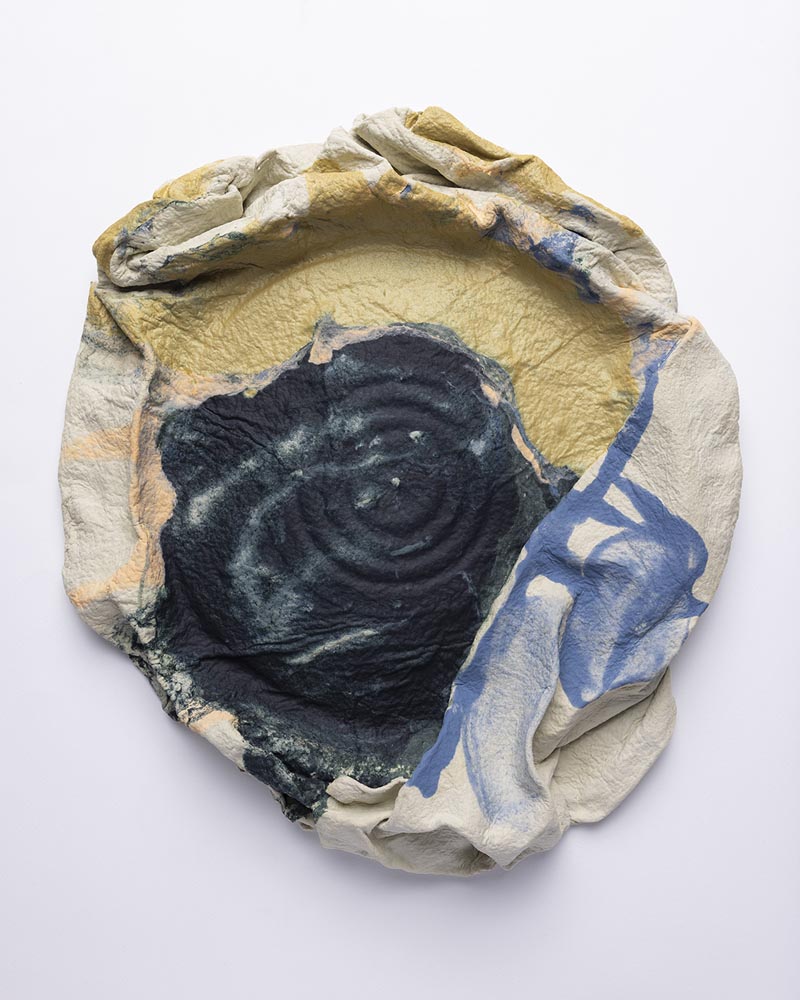
(left) night glow tumult Papier-mâché, handmade paper with linen pulp paint, plaster, and wood 84 inches x 36 inches x 10 inches 2020 Image Credit: Jess Kourkounis (right) Old Wind Folded handmade paper with pulp painting 18 inches x 18 inches x 4 inches 2022 Image Credit: Ryan Collerd
What are you currently working on and where did the inspiration for it come from?
Currently, I am working on my largest sculptures to date. In October, I received a grant to learn welding so that I could create 7’ armatures for my paper sculptures. These monumental works will be featured in a two-person exhibition with Eleanna Anagnos, curated by Tally de Orellana. The show 'Shift. Breathe. Expand' at Amelie A. Wallace Gallery at SUNY College, Old Westbury will highlight works that focus on the potential of paper pulp as a flexible and emotive medium.
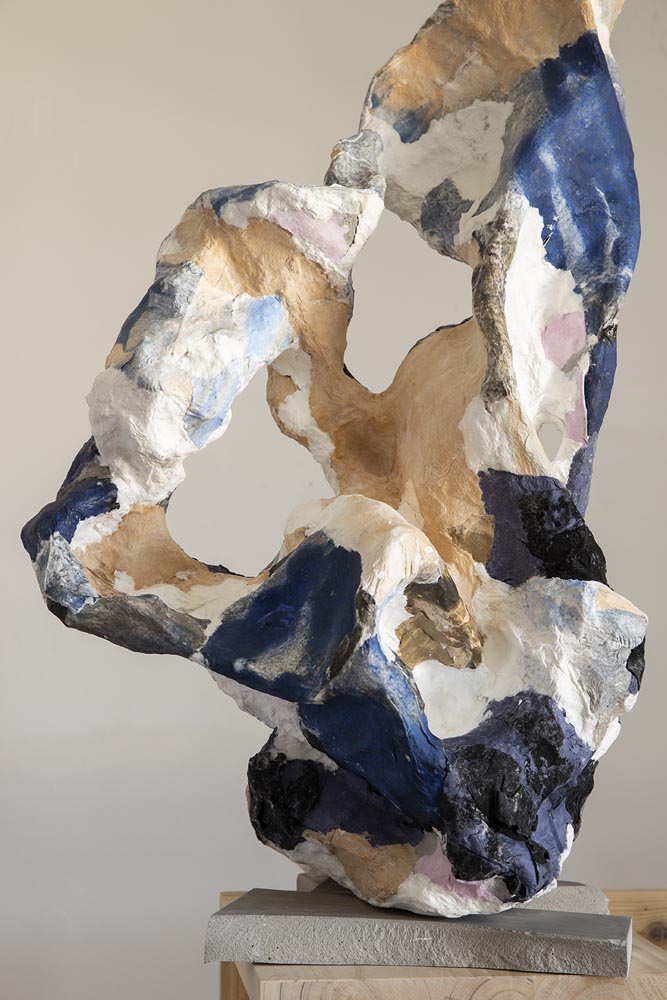
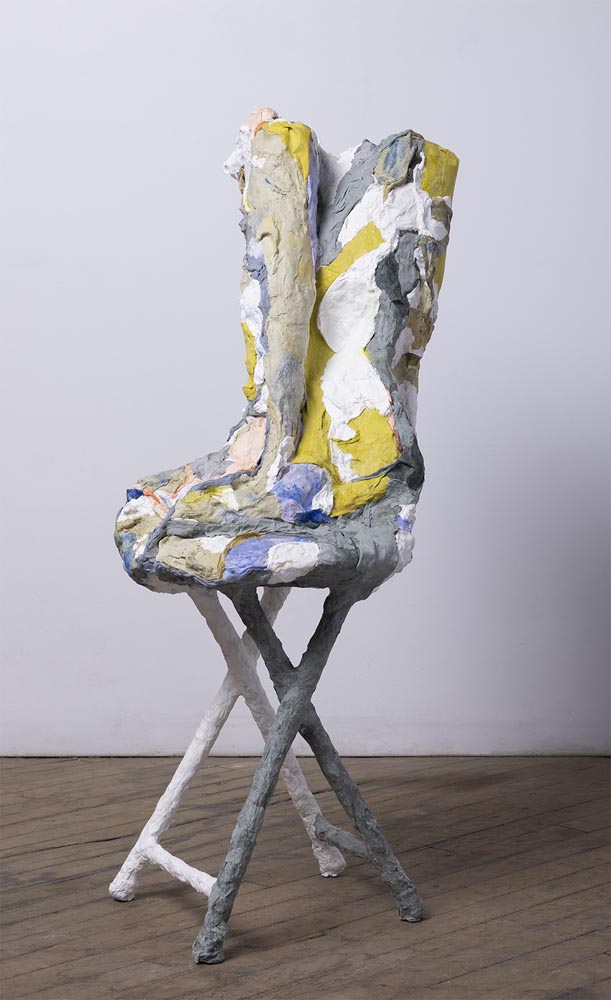
(left) night glow tumult, detail Papier-mâché, handmade paper with linen pulp paint, plaster, and wood 84 inches x 36 inches x 10 inches 2020 Image Credit: Jess Kourkounis (right) Drinking Sun Papier-mâché, handmade paper with linen pulp paint, and steel 45 inches x 15 inches x 18 inches 2022 Image Credit: Ryan Collerd
My goal is to capture the directness of my interactions with paper pulp and pigment as a means to reflect the somatic, sensory, and experiential. I want my sculptures to heighten the experience of encounter, emphasize the body in space, and suggest connection to the larger world. For me, the notion that visuality can be tactility, pushing us beyond surface encounters with art works, reinvigorates abstraction in a crucial way.
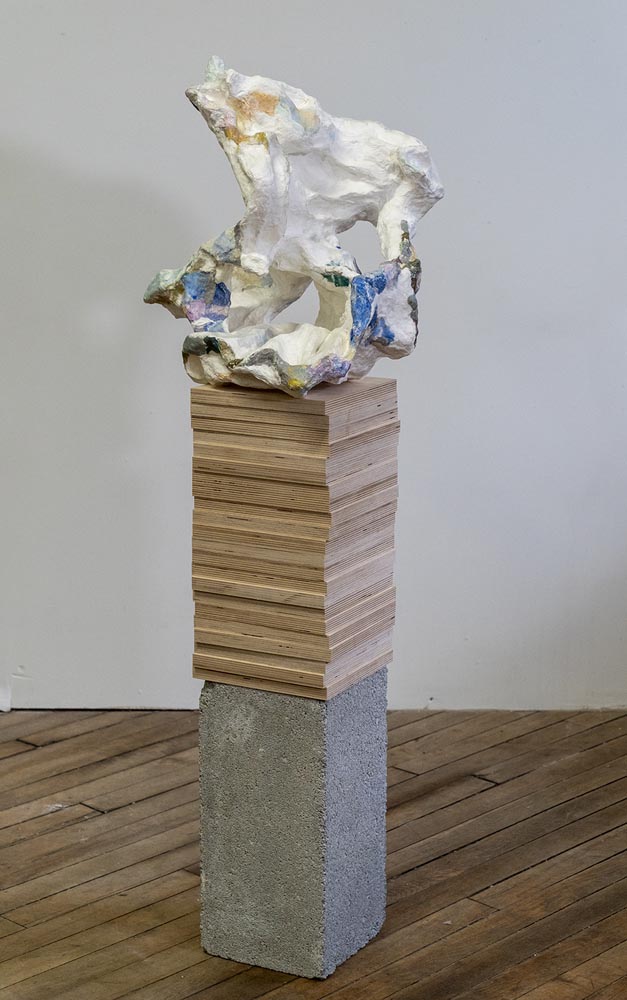
Deluge Papier-mâché, handmade paper with linen pulp paint, cement, and wood 50 inches x 14 inches x 14 inches 2019 Image Credit: Jess Kourkounis
I am drawn to color that evokes ephemeral natural processes, both in the chosen hue and the way color interacts with the sculptural surface. I gather color ideas through my own experiences, both external (taking a walk; standing in my kitchen) and internal (a certain memory; a physical feeling).
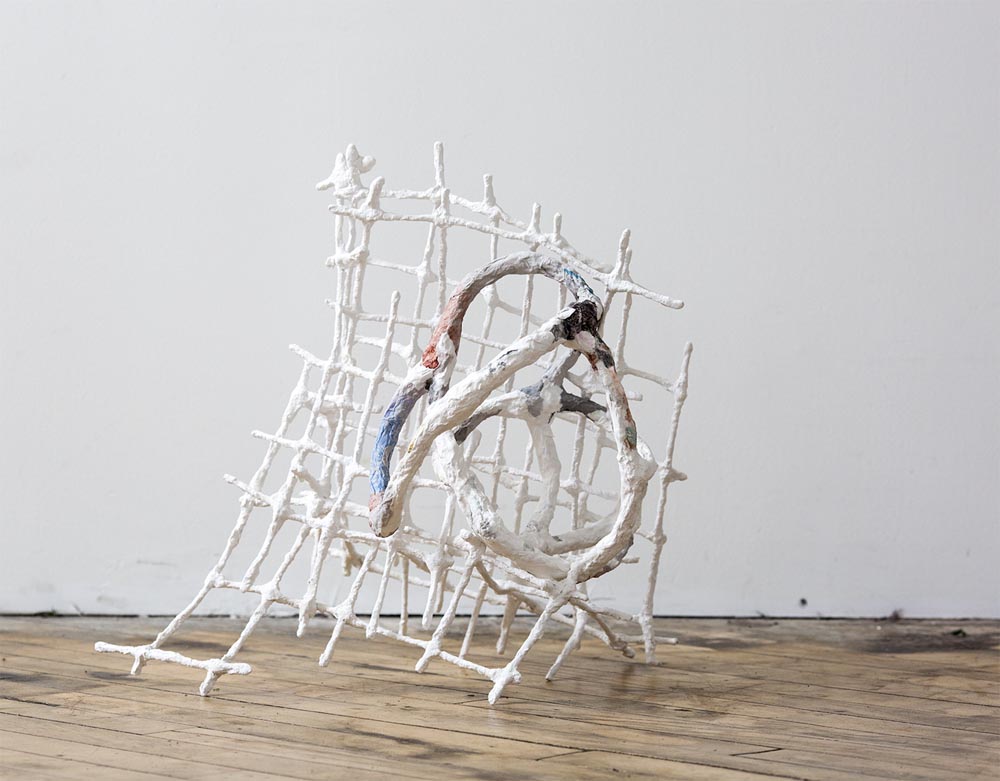
Vessil Fossil Papier-mâché, handmade paper with linen pulp paint, plaster, and wire 19 inches x 13 inches x 16 inches 2018 Image Credit: Jess Kourkounis
I know that in the face of this violent and complex time, poetry is needed. And it can make us feel more deeply. I am committed to representing what is physical, transitory, and quotidian, even if it also means confronting the anxiety, grief, and mystery that accompanies awareness of the ever-changing world.
Innovation does not only happen in the field of technology — it occurs everyday in a creative practice. What do you do for inspiration?
Reading poetry and writing can help me get into the headspace of expansion and experimentation. Last year I took an incredible poetry class with Holly Wren Spaulding’s Poetry Forge school. I learned about the Zuihitsu form (translated as “running brush”), and I became fascinated with how fragments in language can build new connections for meaning, or suggest atmosphere or feeling. It’s really similar to the collage work that I create with my pulp paintings.
Writing poetry and reading poetry has helped me set the stage for my sculptures, generate titles, etc.
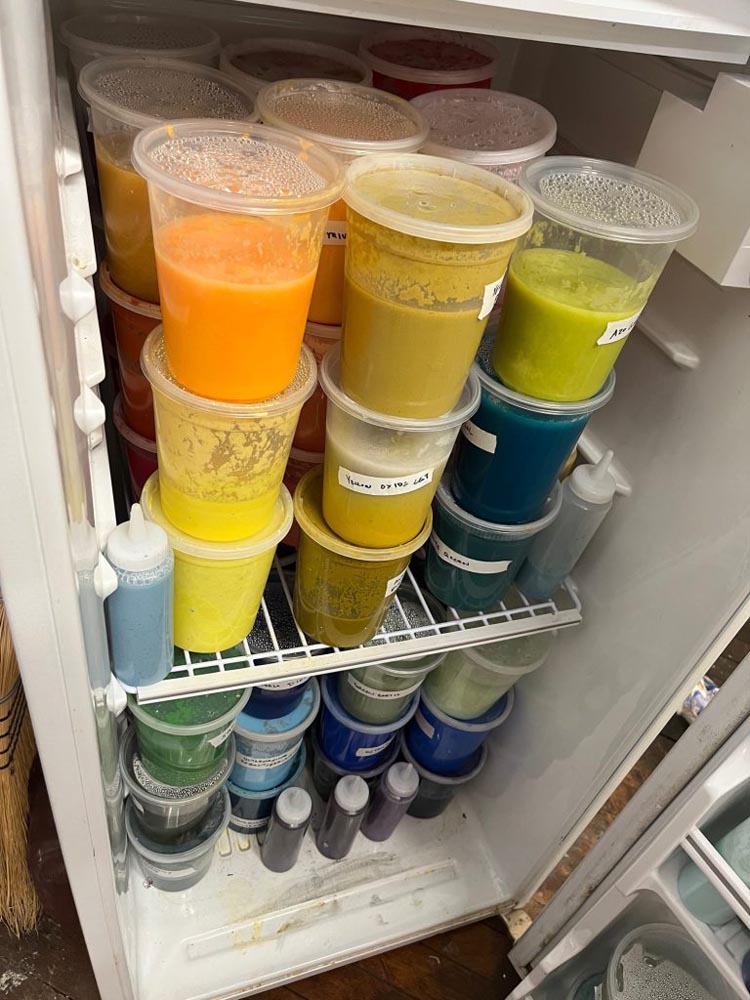
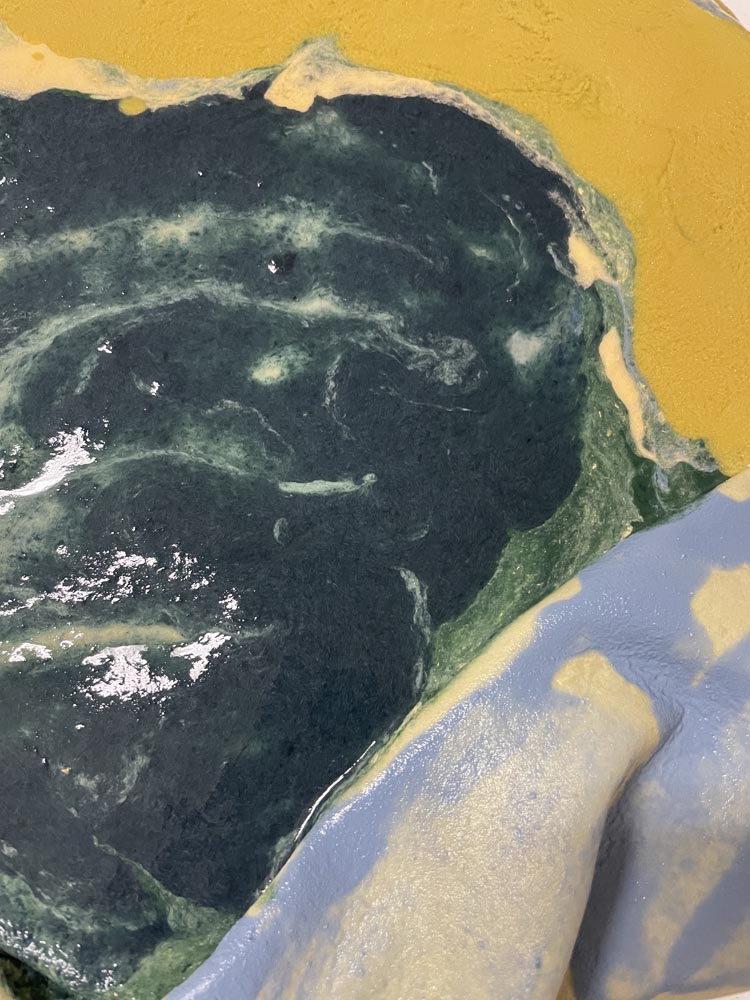
(left) Linen paper pulp stored in fridge in my studio. (right) Wet pulp painting in sculptural form in my studio.
Describe your practice and process. Where do ideas start for you? In the studio or being in the world?
I begin by making pulp paintings in wet, handmade paper, sensitive to the ways its surface records my gestures, and allowing the pigments of color to disperse and build. These fragmented paintings are pieced together, sometimes embedded with textiles, and laminated over papier-mâché sculptures like a skin of painterly marks. Finally, I create pedestals with wood, steel, or other industrial materials that juxtapose or echo the finished forms.

Pulling a sheet of neon yellow cotton paper at Pyramid Atlantic Studios, Hyatsville, MD.
For me, ideas start in the studio. I am interested in materials with metaphorical implications. Paper is so much about the body because of its responsiveness—while the pulp absorbs my movements as I work, it also has a life of its own that informs the final piece. When I leave a sculpture to dry in the studio, the fibers shift and transform in ways I respond to when I return. The changed shape of the sculpture will allow me to view it in a new way that inspires improvisation with texture, color, and layering.


(left) Preparatory drawing for welding this fall in my studio. (right) "We Bend With Massive Waves" in progress in my studio. Summer 2022
How do you make your work, does it start with a sketch?
I often begin by making really quick drawings. These images build a vocabulary of forms but I do not directly sculpt from my drawings. My process is very intuitive.


(left) Welded steel armatures for exhibition (NextFab) at SUNY College. (right) Watercolor drawing.
There’s a sense of mending and repair in the work; they’re bodily, psychological, but also like rock forms or small landscapes. Color and texture suggest processes happening to them or within them–an experience like being a human.


(left to right) Winter tree on my street; Cloud at dusk
Do you have your own studio ritual? What does that look like for you?
A typical day is going to the studio before I teach. I work in the studio during afternoons and weekends. An ideal day is all about being in flow. I might start by going for a walk or doing some yoga. Staring at clouds is great too.
I love having time to draw and then several hours to experiment with materials or work intensely on pieces. I prefer larger uninterrupted blocks of time, if possible.

Rocky coast in Sifnos, Greece
Who are your biggest influences?
The questions raised by my choice to sculpt with soft materials connects to an art historical lineage. In Eccentric Abstraction, artists like Eva Hesse, who began as a painter, explored the materiality and sensuality of the sculptural surface and ambiguous form as a way to build meaning and language. I also identify with the interest in color, craft, and visual pleasure shown by artists of the Pattern and Decoration Movement, in which the playful work of Ree Morton and Betty Woodman engages paradoxes surrounding feminism and craft.
One recent discovery is Suzanne Jackson. She has a brilliant way of building sculptural paintings that float within the space and it is breathtaking. Other artists I’ve been excited about are Michelle Segre, Brie Ruais, Arlene Shechet, Hong Hong, Maren Hassinger, and Clare Grill.


Studio views
Some works that have deeply inspired me:
Louise Bourgeouis’ “Personages”
Lynda Benglis’ “Fallen Paintings”
Jay De Feo’s “The Rose”
Sam Gilliam’s “Capes”
Cy Twombly’s assemblages
Anne Hamilton’s “Paper Chorus”

Cambrian Papier-mâché, handmade paper with linen pulp paint, bricks, and wood 25 inches x 25 inches x 9 inches 2018 Image Credit: Jess Kourkounis
Are there books or films that are an important source of inspiration?
The poet Kimiko Hahn’s “Narrow Road to the Interior” is a new favorite of mine. I am inspired by the ways she plays with lists to explore the complexities of gender, identity, and feeling.
I just started reading "Atlas of Emotion" by Guiliana Bruno and it is incredible.
What’s the best piece of advice you’ve been given?
If you are stuck, make 100 drawings.
What is the best advice you would give to other artists?
Community is everything. Find your people.
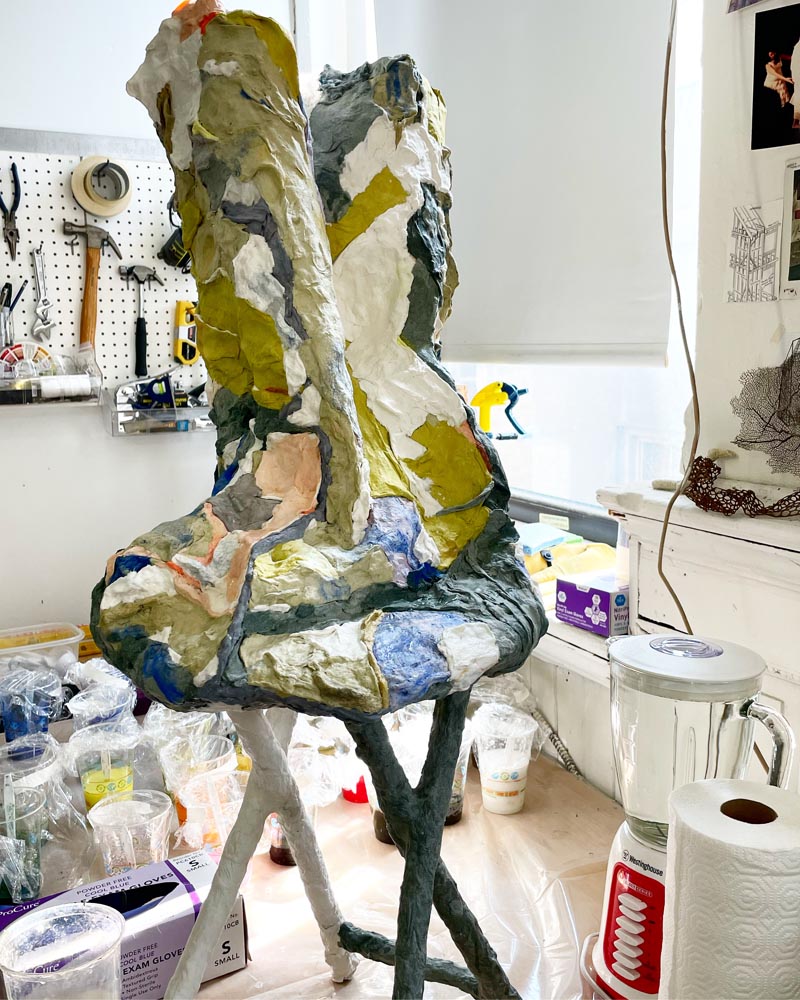

Studio view
Stay up to date with Alexis Granwell
Instagram @alexisgranwell
alexisgranwell.studio